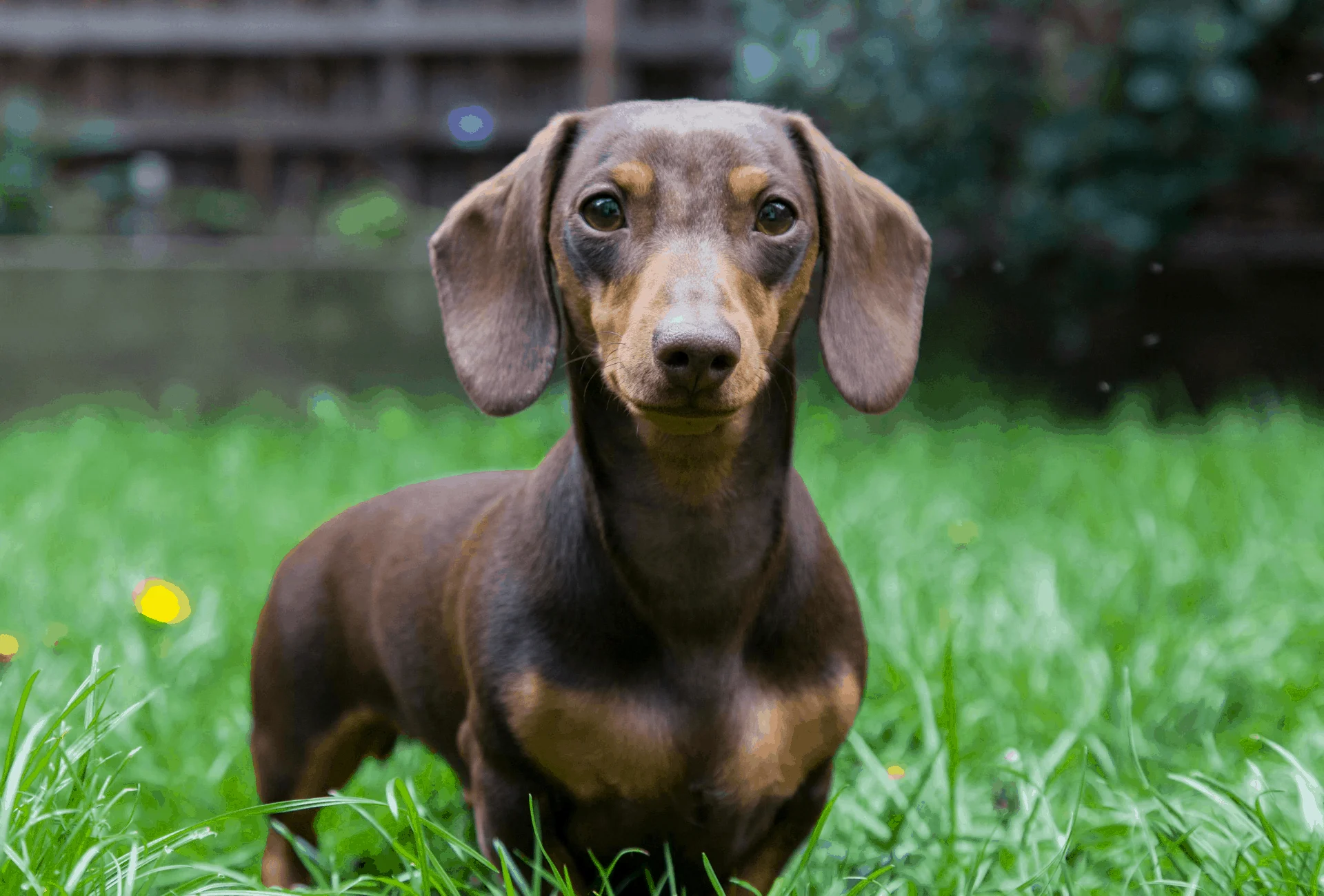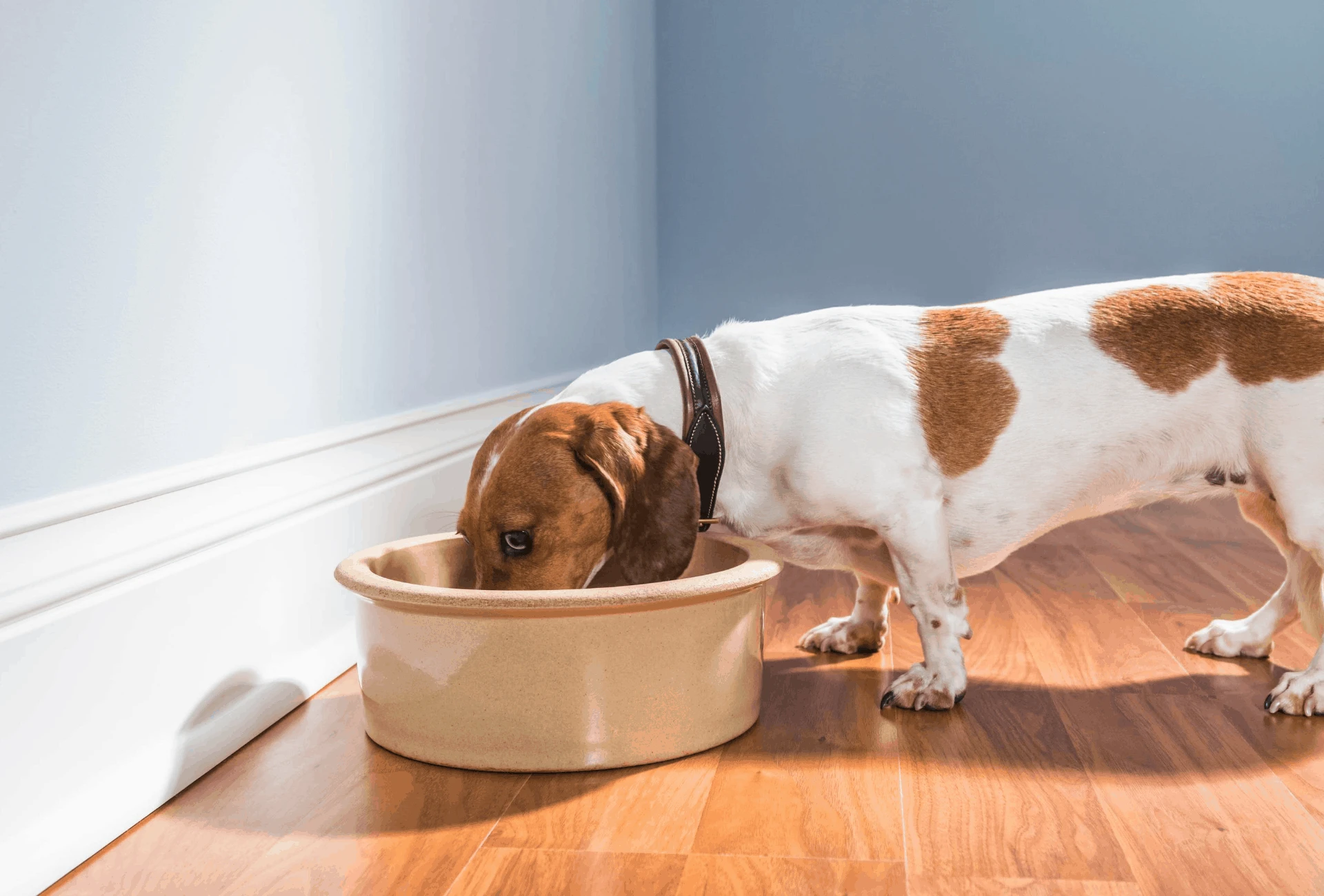The Dachshund also called Doxen or Doxing Dog is a German hunting dog and is famous for its short legs and long body.
Their popularity gained a surge during WWII as they became a national icon in Germany.
But also the United States quickly became fond of the cute and unique-looking sausage dog. They even made it to the top 10 list of the most popular dog breeds in the US.
In my article about 10 Dachshund facts you didn’t know I already talked about many surprising facts and one of them is their longevity.
Believe it or not but the two oldest dogs that have ever roamed this earth were both Dachshunds.
Despite the astonishing age this breed can reach they won’t be with us for our whole lives so it should be our priority to make their time as enjoyable and as long as possible.
In this post, we will talk in-depth about how long Dachshunds live, critical breed-related issues, and what you can do to increase their lifespan and quality of life.
Dachshund Average Lifespan
Due to their small size, the Dachshund has impressive longevity of 12-15 years while the average dog only reaches 10-13 years.
How long they will actually live depends on many factors like health, exercise, diet, environment, and genetics.
A large determining factor is breed-related health issues. We will go about other causes of death below and how many of them can be prevented or bettered.
Miniature Dachshund Lifespan
The miniature Dachshund is a smaller version of the Dachshund and has a life expectancy of 12-16 years. They only reach a weight of 11 pounds while a standard-sized Dachshund can weigh about 30 pounds.
Due to their compact size and breeding history, they are more prone to develop health issues. Nonetheless, compared to larger breeds this is a top-notch life expectancy.

Did you know that Pomeranians can live 10 years longer than Great Danes? Why is it that small dogs live that much longer than large breeds?
To this day, researchers are not quite sure about the specific reasons why canines have such wide-ranging lifespans within the same species whereas large species, in general, tend to live longer than smaller species (think about elephants and mice).
Small and large breeds seem to be differentially susceptible to certain diseases. Large breeds also experience an earlier onset of senescence with an increased rate of aging.
And you may have already observed that the average lifespan of a dog drastically decreases when body mass increases, especially in giant breeds.
What Is the Oldest Living Dachshund?
The oldest living Dachshund was a dog named Chanel and she lived to be 21 years and 114 days old when she died due to natural causes.
Otto is the second oldest Dachshund and reached an impressive age of 20 years. He was euthanized after his devastating diagnosis of stomach cancer.
A third Dachshund held the world record until 2013 and also lived to be 20 years old. Number 18 on the list is Scolly from Mexico who also enjoyed a long and happy life.
We would obviously like to know how these pups managed to live such long lives and will go about the secrets further below.
There is another Dachshund named Rocky who has never made it to the Guinness Book but reached a record-worthy age of 25 years.
On his 25th birthday, the vet and his owner decided to put him down despite his overall good health.
His joints have worn out so much that they no longer could carry his body. This is the sad truth for 25% of all Dachshunds that are affected by spinal problems.
Leading Causes of Death in Dachshunds
Unfortunately, age doesn’t only come with white whiskers especially not for Dachshunds. While most Dachshunds die from old age, leading causes of death include heart failure, cancer, and neurological diseases.
These causes can be hereditary but many of them are a result of their upbringing and lifestyle. Young dogs mostly die from trauma or congenital diseases which are totally preventable.
What Health Problems Can Dachshunds Have?
Like every breed, Dachshunds can be affected by a variety of health issues that are frequently seen and spread within the breed. When looking at most dogs, some problems will become obvious.
Pugs have such short snouts that respiratory problems are very likely. St. Bernards like many other heavy breeds are subject to joint issues due to their enormous weight.
Dachshunds have one of the most unique body types in the canine world. Their short legs and long bodies not only look cute but also come with many health problems.

Spinal Problems
Due to their unique skeletal design, Dachshunds have a strong disposition to back issues.
As I mentioned above, about 1 in 4 dogs from this breed will face some type of spinal problem within their lifetime.
Their short-leggedness is a dwarfism trait and carries the medical term chondrodysplasia. It’s a genetic abnormality and also seen in other breeds like the Basset Hound and Beagle.
Intervertebral Disk Disease
The most common musculoskeletal condition in Dachshunds is called intervertebral disc disease (IVDD) which is characterized by degeneration of one or more disks in the lower back.
As a result, the spine loses flexibility which manifests in severe back and neck pain. Your Dachshund may limp, is more fatigued or yelp when being touched on those sensitive areas.
The condition may even result in an inability to walk or carry weight on the limbs. Treatment methods range from oral medication to surgery which may be needed to get your dog’s life quality back.
Obesity
Although obesity is never a good thing in any dog breed, Dachshunds may suffer from more severe consequences due to their distinctive body type.
It’s always important to monitor your dog’s health using a bodyweight chart, breed standard, and recommendations from your vet. A dog that is 10-20% heavier than the ideal body weight is considered overweight.
Everything over 20% is considered obese which can result in a shortened lifespan of 2-3 years. This extra weight pushes on those tiny legs and strains the lower back and joints resulting in pain and discomfort.
Shockingly about 18% of all pet dogs are obese making it one of the most prevalent health issues in pets.
Monitoring and adjusting your dog’s diet is mandatory to ensure maximum health.
Hip Dysplasia
Hip dysplasia is caused by a deformed hip joint where the ball and socket of the joint constantly rub against each other. Many breeds are born with a certain predisposition to joint problems which are usually large and heavy breeds.
But also smaller dogs can suffer from this condition. Factors like growth rate, nutrition, and exercise can all influence the development of joint deterioration.
If you notice pain, stiffness, lameness, or any decrease in the range of motion, talk to a veterinarian. The earlier hip dysplasia is diagnosed the better it can be treated.
Eye Issues
Dachshunds are sadly prone to a variety of eye problems like glaucoma, cataracts, and progressive retinal atrophy (PRA).
Glaucoma occurs when excess fluid in the eye puts pressure on the internal structure leading to pain and even blindness.
A cataract is a hereditary condition that causes the eye to become milky and cloudy. Depending on the severity of vision loss, dogs may experience disorientation and increased thirst. Surgery is the primary treatment option to prevent blindness.
Progressive retinal atrophy (PRA) is probably one of the worst eye conditions. It’s characterized by retina degeneration which eventually leads to blindness. Sadly, there is no known cure for this illness.
Miniature Dachshunds are significantly more subject to developing eye issues, so be extra cautious when looking out for early signs.
Hyperadrenocorticism
Hyperadrenocorticism or Cushing’s syndrome is a chronic overproduction of cortisol over an expanded period of time. Dogs may show symptoms like increased thirst, reduced activity, hair loss, panting, or skin infections.
It’s most commonly found in older dogs but breeds like the Dachshund, Boston Terrier, and Boxer have a certain predisposition for it.
If left untreated, dogs can become more lethargic and susceptible to contracting infections.
Cushing’s syndrome can be treated with a drug called trilostane (Vetoryl). If the condition is caused by a tumor on the adrenal gland, surgery might be the best treatment.
Heart Failure
Heart failure is a leading cause of death in Dachshunds. In their senior years, heart valves may become weak and leaky which impairs the even distribution of blood into the body.
Congestive heart failure or heart disease can also be exacerbated by exercise, diet, and infections. If you notice coughing, breathing problems, or lethargy, you should take your dog to the vet for chest examination and blood tests if needed.
Unfortunately, CHF cannot be treated but drugs and supplements can help improve your dog’s life quality and even prolong it. A pacemaker may be inserted surgically to correct the heart beat and torn valves can be removed.
Skin Problems
Skin conditions like flea allergy dermatitis and sarcoptic mange are commonly seen in Dachshunds. Look out for itchy, inflamed, or flaky skin with hair loss or a dull coat.
Blue and Isabella Dachshunds (dilute) can lose their fur from about 6 months of age. The exposed skin is highly susceptible to infections, cancer, and itchy dermatitis.
Excessive scratching and sore skin are telltale signs that something is wrong. Most skin problems can be dealt with by using medication and diet changes.

How to Increase Your Dachshund’s Lifespan
Owning a dog is a wonderful thing and every owner probably agrees with me when I say that we would like them to live as long as we do.
While this is sadly not possible, there are many things that you can do to prolong and better your Dachshund’s life expectancy.
Choosing the Right Breeder
Achieving maximum health for your companion starts right at the beginning when you choose a puppy. Correct breeding is the foundation of a healthy and confident dog.
Always insist on seeing the health certificates of the parents to ensure that they don’t carry any hereditary diseases.
Pay special attention to the breed-related issues I have mentioned above that commonly affect Dachshunds.
Genetics play a huge role in the overall health and temperament of your chosen puppy. Their upbringing in the very first weeks is crucial for their development.
The puppies should live in a clean and calm environment preferably with both parents. They should be vaccinated, dewormed, and at least 8 weeks old before going into a new home.
Read my guide on All 17 Questions You Need to Ask Your Potential Breeder which will help you determine a responsible breeder.
Furthermore, make sure that you do your research about the breed. There is a plethora of information available online about Dachshunds, their needs, history, and health.
Care for Their Back
A Dachshund’s back is probably the most fragile part of his body. Make sure that your dog doesn’t need to walk stairs on a daily basis and consider getting a ramp for your car, sofa, or any other elevated furniture.
Alternatively, you can obviously pick him up which is a huge advantage to all the giant breeds that are prone to joint problems. But even when picking up your dog, there are a few things you need to watch out for.
His rump should always be supported with one hand and his body kept level to avoid straining the back. I have created a whole post about how to carry and pick up your dog correctly so make sure to check it out.
The Right Exercise
Many owners make the mistake of underexercising their Dachshund because they believe that exercise may not be beneficial or that small dogs don’t need as much.
Exercise is incredibly important for their heart, weight, and muscular structure that supports their bones.
An adult Dachshund should be exercised for 60 minutes every day which should include walks, playtime, training, and mental stimulation.
If your dog is already suffering from health issues that won’t allow as much exercise, brain games should be prioritized. Swimming is also a great exercise for dogs that are prone to spinal problems.
Small dogs have a harder time getting comfortable in the water but they can definitely become great swimmers. To keep your dog safe, I would recommend the Outward Hound Dog Life Jacket.
Watch the Weight
Maintaining a healthy weight is critical, especially for small dogs that can quickly become overweight. A good rule of thumb is to check if you are able to feel your Dachshund’s rips when petting him.
They shouldn’t be visible but touchable without a layer of extra skin or fat on top. When looking from above, the waist should be visibly distinct from the rest of the body. Regular weighing will help you with that.
Balanced & Healthy Diet
You probably know that weight and health are determined by what you consume. When it comes to your dog, you can mainly choose between raw, dry, wet, and homemade food.
Educate yourself thoroughly about every option and consult a pet nutritionist if you like. Many brands offer breed-specific dog food that is tailored to their needs. Nonetheless, there still can be ingredients that you should avoid especially in store-bought food.
I personally feed my dog a raw diet so I can see everything that goes into her food and it’s incredibly tasty for her.
Whatever option you choose, check the ingredients list and make sure that your dog’s diet is filled with the right nutrients.
I have lined out how you should go about that in my downloadable guide that I have mentioned above.

Health Care
Routine checkups are common for people so why shouldn’t they be normal for dogs? Taking your dog to the vet regularly will help with early diagnosis and better treatment.
Your Dachshund should also be up to date on his vaccinations and worm treatment. At home, you can regularly check your dog for any lumps, behavior changes, skin irritations, or signs of illness.
Grooming
Grooming is often overlooked and reduced to the minimum which is brushing once in a while. Depending on your dog’s coat (long, short, wired) you may need more or less brushing or bathing to keep the fur untangled.
But it shouldn’t end there. Clean teeth as well as clean ears are just as important. You can brush his teeth using a regular pet toothbrush or you can use natural alternatives.
Wax and debris should be removed from their ears to reduce the likelihood of infection. Nails should be kept short and clean using a nail grinder or clipper.
Supervision
Supervision doesn’t stop after puppyhood. Thousands of dogs die every year due to trauma, car accidents, ingestion of toxins, and other causes that could be easily prevented by supervision.
Keeping your dog on the leash outdoors and preventing your dog from running outside the door are two huge points that will minimize the chance of trauma outside.
But also your own home can be a health hazard. Cleaning products, drugs, fertilizer, houseplants, and toxic foods are all potentially dangerous to your canine friend.
Armed with this knowledge, I hope that you will enjoy many happy and healthy years with your amazing Dachshund!
Disclaimer: This blog post doesn’t substitute veterinary attention and does not intend to do so. If your dog shows any signs of illness, call your vet immediately.
